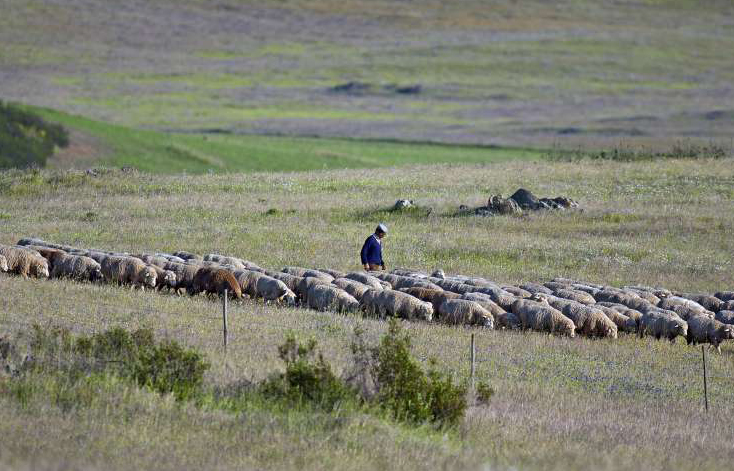- Inicio
- Actualidad
- Noticias
- European project recovers traditional grazing practices to prevent fires
European project recovers traditional grazing practices to prevent fires

23 septiembre 2019
In the Transmontana area of Romeu, in Mirandela, one of the eight experiences of the project presented today to the media and involving sheep of the Churra Galega Bragançana breed, responsible for the protected designation lamb, is underway.
A European project that brings together 13 partners from Portugal, Spain and France is trying to restore old grazing practices to prevent forest fires and improve the quality of livestock products.
In the Transmontana area of Romeu, in Mirandela, one of the eight experiences of the project presented today to the media and involving sheep of the Churra Galega Bragançana breed, responsible for the Protected Designation of Origin (PDO) lamb, is underway.
“We are recovering practices and techniques that were previously used by pastors, but the result of rural abandonment have been demotivated and now what we want is to recover these practices with better technologies, better techniques and value the products obtained in these areas”, explained Alfredo Teixeira, from the Polytechnic Institute of Bragança (IPB).
This institution is part of a group of 13 partners, including higher education institutions, research centers and technological institutes, foundations, regional management bodies and 22 associations from Portugal, Spain and France. The OPEN2PRESERVE project is funded by the European Union for over EUR 1.7 million through the ERDF (Regional Development Fund) program.
According to Alfredo Teixeira, the objective “is, with combined cultural practices of controlled fire or mechanical cleaning, associated with grazing sheep or horses, to seek to prevent forest fires and preserve these spaces”. In the case of Romeu, specifically in Vimieiro, a plot of land is being worked on, where mechanical cleaning has been done so that, when the vegetation bursts, it begins to be herded by sheep.
GPS-controlled animals
The animals will be tracked via GPS to study their occupation and the quality of the meat will be analyzed to compare with normal herding practices and to see what the value is. The promoters also want “this plot to serve as an example for similar practices to replicate” the project.
The project involving the three countries is coordinated by the Public University of Navarre and is halfway through with completion date in February 2021, but stakeholders are already considering calling for the deadline to be extended. According to Rosa Maria Canales of the University of Navarra, it will take at least “two more years to achieve more consolidated results.”
Fernando Costa is a shepherd of the herd with more than 170 sheep who participates in the Mirandela experience and ensures that those lands are “very good for cattle”. He says nothing about the project because he is not the boss, but hurries to challenge the association of herders with forest fires. “It will be people who do it wickedly, now the shepherd does not set fire. Then where will the shepherd put the cattle to eat?”
Contributing to improving the relationship between fires, shepherds and the environment is also one of the purposes of the project which also shows “the social component of livestock” and, in this case, the contribution to clean the most sensitive areas, as highlighted by Armando Carloto, Technical Secretary of the Churra Galega Bragançana Breed.
Armando Carloto said that this breed of sheep cannot complain, because it is one of the few that is increasing the herd, from 10,000 animals to approximately 15,500 in a decade.
However, the price of lambs has not risen “for more than 20 years”, unlike production costs, and “depending on income, there are fewer and fewer shepherds” in a region that “has fewer and older people”. advanced, “he found.
Compartir:
#CalidadSuelosAplicacionesMedioambiente














